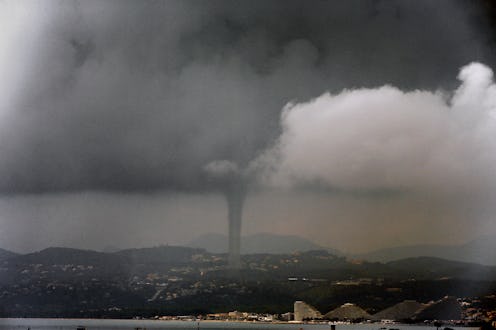News
3 Things You Need to Know About Tornado Season
On Friday, there were possibilities for tornadoes from Tennessee to Washington D.C. after a week full of severe weather outbreaks across the country, according to Gawker. A tornado watch was in effect Friday along the east banks of the Mississippi and Ohio Rivers and the Storm Prediction Center warned of the risk for tornadoes from Washington D.C. suburbs to southern New Jersey. With such a large portion of the southeastern U.S. experiencing severe weather, there are a few things everyone should know about tornadoes.
Even if you don't live in Tornado Alley, the area in the south-central U.S. that has the most frequent tornadoes, a storm is still possible where you live. According to Live Science, tornadoes can happen anywhere. Most tornadoes form from thunderstorms and occur when rising warm air collides with a change in wind direction, forming the swirling shape, so they can pop up wherever these conditions happen.
While warmer weather tends to bring tornadoes, tornado season differs across the nation and unlike hurricane season, the whole tornado season for a given year can't really be forecasted. Meteorologists can forecast tornadoes a few days ahead of time, but not much further in advance. Because there's often little warning of an impending tornado, here are three things everyone should know about the dangerous storms.
1. When Tornado Season Is
There is no clearly defined tornado season, but most of the storms tend to happen in the spring. A second peak tends to occur in November because of the changing weather. However, tornadoes have happened in every month of the year across the U.S.
2. Tornado Watch vs. Tornado Warning
The National Weather Service issues tornado watches when it believes weather in a specific area has the potential to lead to a tornado (often due to thunderstorms in the region). A tornado watch means you should be prepared in case one suddenly forms, but it doesn't mean there will definitely be a tornado. On the other hand, a tornado warning means that storm circulation looks likely to produce a tornado or that a tornado has already formed, according to Live Science. When a tornado warning is issued, you should start to find a safe shelter.
2. Where to Seek Shelter
The safest place to be during a tornado is in a basement under something sturdy, like a table or mattress, according to the Storm Prediction Center. If you don't have a basement, you should go to a small central room on the lowest level of the building, like a bathroom, closet, or under a stairwell (Harry Potter-style), avoiding all windows. You should crouch low to the floor and cover your head with your hands.
Images: Getty Images (3)
